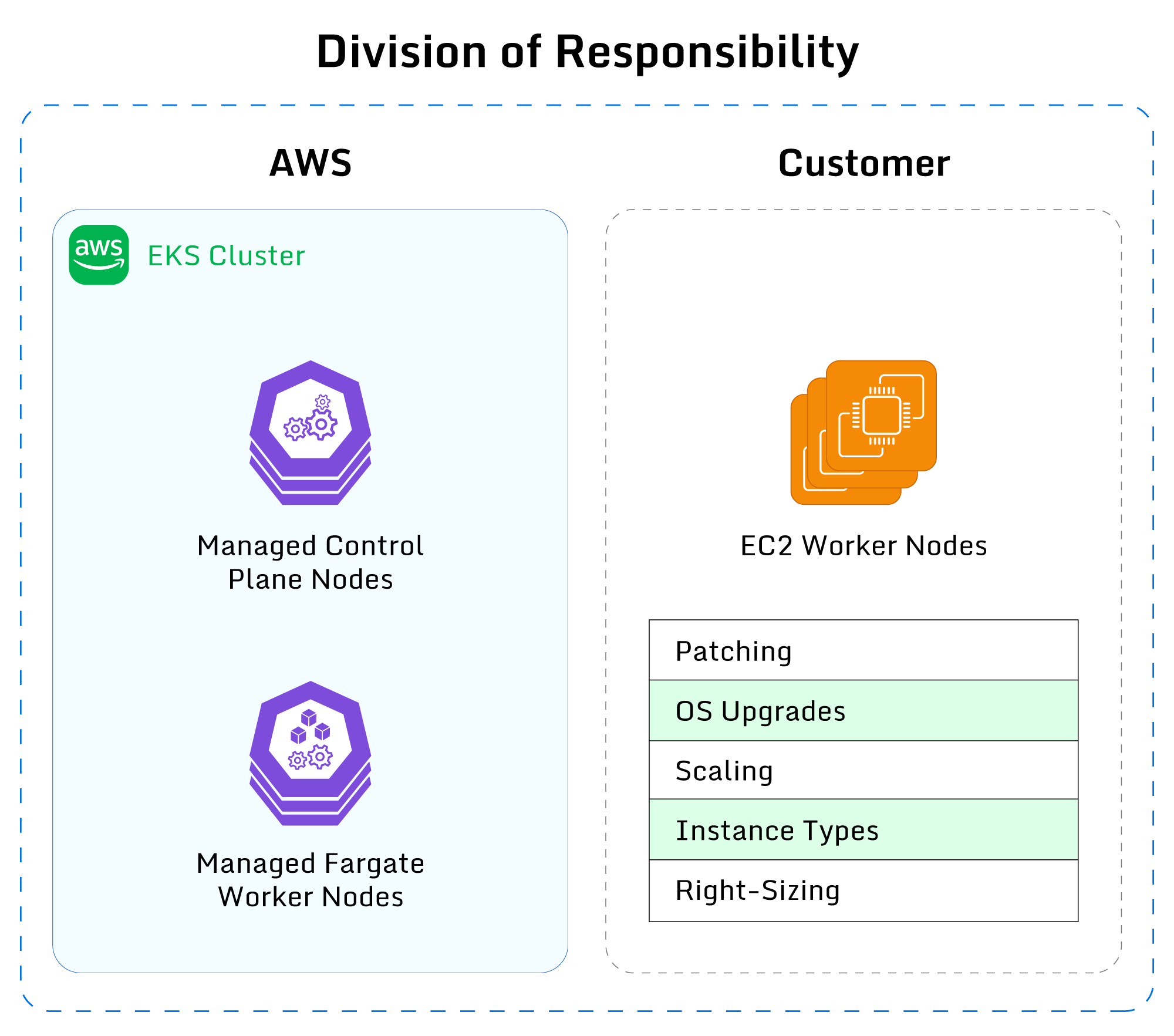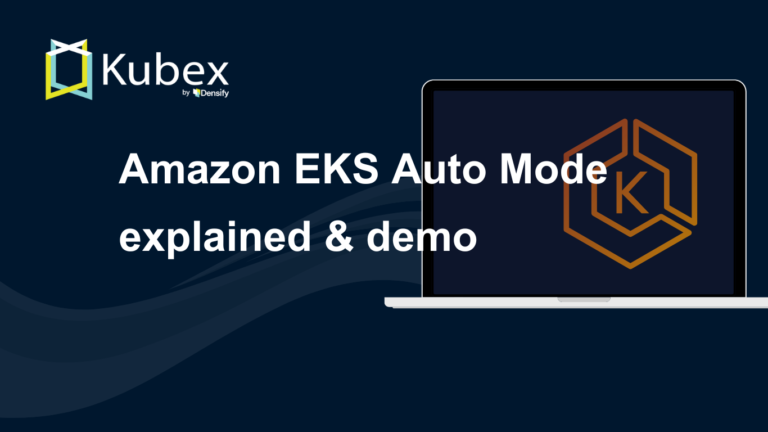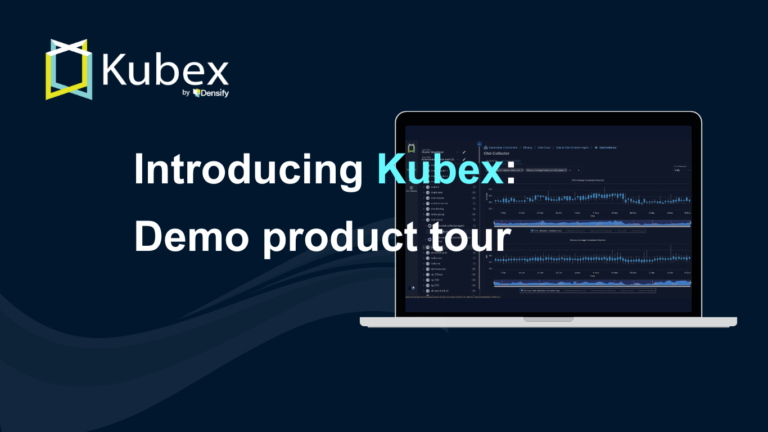EKS Fargate: Features and Best Practices
Chapter 1- Introduction: EKS Best Practices: A Free, Comprehensive Guide
- Chapter 1: EKS Fargate: Features and Best Practices
- Chapter 2: AWS ECS vs. EKS: Comparison and Recommendations
- Chapter 3: A Free Guide to EKS Architecture
- Chapter 4: A Comprehensive Guide to Using eksctl
- Chapter 5: EKS Storage - A Comprehensive Guide
- Chapter 6: A Free Guide to Using EKS Anywhere
- Chapter 7: Fundamentals of EKS Logging
- Chapter 8: EKS Security: Concepts and Best Practices
- Chapter 9: How the EKS Control Plane Works
- Chapter 10: EKS Blueprints: Deployment and Best Practices
- Chapter 11: EKS Cost Optimization: Tutorial & Best Practices
EKS is Amazon’s managed Kubernetes service that enables users to provision managed Kubernetes clusters
while mitigating the need to install, configure, scale, and upgrade the Kubernetes control plane.
Kubernetes clusters need worker nodes to run the user’s container workloads, which are the host machines
that provide compute capacity for the cluster. Using EC2 instances as worker nodes is the traditional
approach, allowing users the flexibility to manage their instances manually.
Fargate is a serverless approach to provisioning compute capacity for EKS clusters without needing to
maintain a fleet of EC2 instances. Reducing manually managed infrastructure enables users to run their
containers without being responsible for provisioning, configuring, patching, upgrading, and scaling a
fleet of EC2 instances. This technique reduces operational overhead while empowering users to focus on
deploying applications instead of managing infrastructure.
An EKS cluster with Fargate support can be launched easily by executing the following command:
eksctl create cluster --name my-fargate-cluster --region us-west-2 --fargateThis article discusses how EKS Fargate works, its use cases, and how it can be helpful for EKS users.
Summary of Key Concepts
| What is EKS Fargate? | EKS Fargate is a managed Kubernetes service providing serverless infrastructure for hosting containerized workloads. |
| Fargate architecture | Fargate infrastructure is fully managed, which means AWS is responsible for provisioning, patching, upgrading, and repairing host machines. |
| Use cases | Users benefit from utilizing EKS Fargate by reducing the operational overhead of managing EC2 infrastructure and spending more time on application design and development. |
| Getting started with EKS Fargate | EKS clusters with Fargate support can be provisioned with the eksctl command-line tool. |
| Observability | EKS Fargate supports monitoring tools like CloudWatch Logs and Prometheus, enabling insight into workloads running on Fargate nodes. |
| Capacity management | Fargate nodes are automatically right-sized based on pod requests/limits. These values need to be set accurately to prevent wasted resources and ensure that workloads perform as expected. |
| Security | Fargate workloads are secured by dedicated tenancy and restrictions on pod privileges like kernel and volume access. |
| Pricing | Fargate users pay only for their compute capacity with no upfront costs. Pricing is higher than EC2 instances but Fargate requires less operational overhead. |
| Best practices | Fargate best practices include right-sizing pod requests/limits, enabling observability tools, organizing Fargate profiles correctly, and understanding what use cases are suitable for Fargate. |
| Limitations | Fargate’s limitations include less control of the host infrastructure, no option to customize the operating system configuration, and restrictions on valid pod configurations. |
| Alternatives | Other compute options for EKS users include self-managed EC2 nodes, managed node groups, Lambda containers, and AppRunner. Analyzing the use case of each will help determine the appropriate approach. |
| Summary | EKS Fargate is a valuable tool for EKS users aiming to reduce the operational overhead caused by infrastructure management. Users should validate their use cases to ensure that they are compatible with Fargate. |
Spend less time optimizing Kubernetes Resources. Rely on AI-powered Kubex - an automated Kubernetes optimization platform
Free 60-day Trial
Fargate architecture
EKS Fargate nodes are fully managed by AWS, which means the host machines run within AWS internal
accounts and are not visible to users. AWS is responsible for managing the machine hosts, including
initial provisioning, operating system upgrades, patching, health checking, and repairs in the case of
failure.
When a user deploys a Kubernetes pod (container) to Fargate, the user does not need to decide on instance
types, AMIs, kernel versions, or other host-specific details. The user deploys the pod with a defined
CPU/memory request, and AWS takes care of provisioning appropriately sized compute capacity to host the
workload. When the user deletes a pod, AWS is responsible for decommissioning the host. Users can now
focus exclusively on managing their pods while delegating compute provisioning to AWS.
An EKS cluster may contain any combination of EC2 and Fargate nodes. When deploying a pod, users may want
to specify whether to assign the pod to an EC2 node or Fargate node. To deploy pods to Fargate, users
will configure the EKS cluster with a Fargate profile, which is a collection of Kubernetes namespace and
label settings to determine which pods are assigned to Fargate. Users will specify a namespace and pod
labels in the Fargate profile. When deploying a new pod to the cluster, EKS will use the Fargate profile
settings to determine whether to assign the pod to EC2 nodes or Fargate nodes. Fargate profiles allow
users to have granular control over where particular pods should run.
The diagram below displays the division of responsibilities between AWS and the user. The EKS control
plane and Fargate nodes are fully managed by AWS, while EC2 nodes (and all associated operational
activities) are the user’s responsibility.

Use cases
The primary use case for Fargate is mitigating the operational overhead of managing EC2 instance fleets.
Teams normally need to invest time and expertise into capacity planning, selecting instance types,
setting up scaling mechanisms (like EC2 auto scaling groups), monitoring unhealthy instances, upgrading
and patching operating systems, and efficiently scaling. These activities take focus away from
application development and solving core business problems. Users can focus on more valuable engineering
challenges by delegating compute capacity management to AWS via EKS Fargate.
Another use case for EKS Fargate is rapid testing and development. Pods can be launched quickly on
Fargate without spending time setting up EC2-related infrastructure, allowing users to quickly build
prototypes and proof-of-concept workloads.
Fargate is also an excellent option for users running temporary workloads like scheduled jobs. This use
case would require infrastructure to only be temporarily available for the duration of the job
processing before disposing of the infrastructure resources. Configuring EC2-related resources for
one-off or temporary workloads involves more overhead than Fargate, where AWS fully manages the
infrastructure provisioning/deprovisioning logic.
Getting started with EKS Fargate
We can deploy Fargate Nodes to either new or existing EKS clusters via the command line or web console.
The de facto tool for managing EKS clusters via the command line is called eksctl. This
tool will provision clusters, EC2 node groups, and Fargate nodes, will deploy or upgrade Kubernetes
addons (like CoreDNS), and can enable other valuable operations required by cluster administrators. For
more details, you can view the
full installation instructions on the AWS site.
Provision an EKS cluster
The eksctl tool can read configuration settings from a ClusterConfig text file, which is
helpful for recording a reproducible configuration state in a version control system. Here is an example
of a ClusterConfig plain text file defining an EKS cluster with Fargate support:
apiVersion: eksctl.io/v1alpha5
kind: ClusterConfig
metadata:
name: my-fargate-cluster
region:us-west-2
# Create a Fargate Profile
fargateProfiles:
- name: fargate-profile-1
selectors:
# Pods in the "serverless" Kubernetes namespace will be
# scheduled onto Fargate:
- namespace: serverless
Save the text above into a file with a meaningful name, such as fargate-cluster.config. Use the
configuration to deploy an EKS cluster by running this command:
eksctl create cluster --config-file fargate-cluster.configThe eksctl tool will launch a cluster with the specified configuration. The output will look similar to
the following:
eksctl version 0.112.0
using region us-west-2
using Kubernetes version 1.22
creating EKS cluster "my-fargate-cluster" in "us-west-2" region with Fargate profile
building cluster stack "eksctl-my-fargate-cluster-cluster"
deploying stack "eksctl-my-fargate-cluster-cluster"
creating Fargate profile "fargate-profile-1" on EKS cluster "my-fargate-cluster"
EKS cluster "my-fargate-cluster" in "us-west-2" region is readyThe EKS cluster will take 15-20 minutes to create. Once the cluster is active, verify that it is
configured and responding properly:
kubectl get svcSpend less time optimizing Kubernetes Resources. Rely on AI-powered Kubex - an automated Kubernetes optimization platform
Free 60-day Trial
Deploy pods to EKS Fargate
Let’s run some pods now to verify that they are running on Fargate. The only requirement below is for the
pods to run in the serverless namespace, which matches the Fargate profile
configuration set earlier. Any pods deployed to this namespace are assigned to Fargate.
First, let’s create the namespace:
kubectl create namespace serverlessNext, we will create the deployment:
kubectl create deployment webserver --replicas 2 --image nginx -n serverlessNow we will check if the pods are running and deployed on Fargate:
kubectl get pods -n serverless--output wideThis command shows us the deployed pods and the corresponding worker nodes hosting the pods. For pods
deployed to Fargate, fargate is the worker node’s name prefix. The output confirms that
the pods were successfully scheduled to EKS Fargate nodes.
webserver-559b886555-6dxsr fargate-ip-192-168-xx.us-west-2.compute.internal
webserver-559b886555-hhd2k fargate-ip-192-168-xx.us-west-2.compute.internalNote: It may take a few minutes for the Fargate nodes to launch, so it is normal for the
pods to remain in the Pending state during this time.
Finally, clean up the
cluster with:
eksctl delete cluster --config-file fargate-cluster.configObservability
EKS Fargate supports standard monitoring tools like CloudWatch Logs and Prometheus metrics. Combining
these tools will provide insight into workloads running on Fargate nodes.
Configuring log streaming can be done via the FluentBit project. Fargate nodes come with a FluentBit log
router preinstalled and will stream container logs to CloudWatch (and other AWS services) for any pods
running on EKS Fargate. The log streaming configuration is sourced from a ConfigMap resource managed by
the user:
kind: ConfigMap
apiVersion: v1
metadata:
name: aws-logging
namespace: aws-observability
data:
output.conf: |
[OUTPUT]
Name cloudwatch_logs
log_group_name fluent-bit-cloudwatch
log_stream_prefix from-fluent-bit-
Fargate nodes also expose standard worker node metrics via Kubelet (and cAdvisor), such as data related
to CPU and memory. Prometheus users can scrape this data along with any custom metrics the pod exposes,
allowing a high degree of observability for Fargate workloads.
While there are no hosts to manage with Fargate, configuring appropriate observability tooling is still
essential to running a production workload.
Capacity management
Fargate workloads benefit from right-sized worker nodes. EKS sizes Fargate nodes at launch according to
the requests/limits defined in a pod, which ensures that there is no wasted excess node capacity in the
cluster. EKS will provide a variety of readily available host sizes for various pod requirements without
users needing to preconfigure instance types manually.
Sizing pods appropriately is necessary to ensure that Fargate nodes are right-sized. Setting values too
high will result in excess cost and wasted resources; values too low will result in malfunctioning pods.
<insert right-sizing product advertising card>Vertically scaling Fargate nodes is not possible: A Fargate node will have a fixed amount of resources
and will not expand based on pod resource utilization. Horizontal scaling is the best approach to
expanding workloads running on Fargate. Tools like the Horizontal Pod Autoscaler or Keda will scale Pod
replica counts according to utilization and trigger additional Fargate nodes to launch. This scaling
approach is beneficial for workloads capable of scaling horizontally but is not suitable for those only
capable of scaling vertically.
Spend less time optimizing Kubernetes Resources. Rely on AI-powered Kubex - an automated Kubernetes optimization platform
Free 60-day Trial
Security
Kubernetes pods deployed to EKS Fargate benefit from workload isolation because Fargate nodes have
dedicated tenancy, so they only execute one pod at a time. There is a highly secure isolation boundary,
where each pod has a dedicated operating system kernel, CPU, memory, and local storage resources. A
compromised pod will be unable to access any other workloads through the compromised host due to this
dedicated tenancy.
EKS Fargate also enhances security by blocking pods requesting root access, kernel access, or access to
host devices, volumes, or networking. Fargate will stop any pods from running if they request any
administrative privileges, increasing the security posture of pods running on Fargate. Nodes also
implement disk encryption by default.
These features provide a layer of security for workloads running on EKS Fargate. Users will still need to
implement additional Kubernetes security best practices to maintain a strong security posture, like
hardening the RBAC configuration.
Pricing
There is no overprovisioning or upfront cost associated with Fargate: EKS Fargate users pay only for the
compute capacity they use. However, the prices will be higher than regular EC2 instances.
Billing depends on the configuration of each pod deployed to Fargate. Pods specify a CPU/memory
requirement, and Fargate nodes launch according to these capacity requests. EKS Fargate will charge by
the minute, so after a pod terminates, billing for it will cease within 60 seconds.
As an example, suppose a user deploys one pod requesting 2 CPUs and 4 GB of memory. If this pod runs in
the US-EAST-1 region (North Virginia), the cost will be $0.099 per hour, which corresponds to an average
monthly fee of $72.27. An EC2 instance with similar CPU/memory resources (such as a t3.medium) may cost
only $30.37 per month, which is less than half the Fargate price.
Depending on EC2 instance type capabilities and Fargate node resource requests, pricing will vary.
However, Fargate will always cost more for the equivalent EC2 compute capacity.
The justification for Fargate’s increased costs will vary for each user, depending on how much
operational overhead the user is spending on maintaining the EC2 fleet. Calculating the engineering time
spent on infrastructure provisioning and maintenance will help determine whether Fargate is worth the
higher compute cost.
See Amazon’s documentation for further details on
Fargate pricing.
Best practices
There are a few best practices users can follow to maximize the usefulness of EKS Fargate.
- Do not configure the Fargate profile to target the default namespace. Users
generally deploy many random workloads to the default namespace, and they may not
want a disorganized mix of pods to all deploy to Fargate. A better approach is to create a separate
namespace dedicated to Fargate, such as serverless, which allows cluster users to
quickly determine which pods are allocated to Fargate or EC2. It also makes it easier to control
deployment privileges to the namespace via Kubernetes RBAC policies. - Troubleshooting any pods running on Fargate will not be possible via SSH, because Fargate nodes do
not allow host access. The limitation should be noted in any developer playbooks to ensure that
alternative troubleshooting approaches are explored, such as execing into pods, collecting
logs/metrics, and testing containers on non-serverless hosts first. - Enable EKS control plane logs for auditing purposes. The audit log will provide insight into
Kubernetes users deploying to the Fargate namespaces, workload details, and resources consumed. This
information can be helpful for auditing Fargate utilization in a cluster. - Investigate the operational hours spent on maintaining EC2 infrastructure to determine the value
proposition of Fargate. Ensuring that the additional Fargate charges are offset by savings in
developer overhead is essential for justifying the choice of service. If the overhead mitigated does
not justify Fargate’s costs, consider other options for running containerized workloads on AWS.
Investing time planning how workloads can utilize Fargate will help prevent future problems.
Limitations
EKS Fargate has a few limitations that are typical of any managed service. AWS can only provide reliable
quality of service assurances to users if there are guardrails to manage user workloads safely.
Evaluating these limitations is necessary for understanding appropriate use cases.
AWS exclusively manages the host machines, so users have no flexibility regarding the Fargate host
machine configuration. Users cannot modify details like kernel versions or operating system settings or
install custom operating system packages. AWS allows EKS users to select between a Linux-based or
Windows-based Fargate node, but that is the only host machine detail exposed to users. No other aspect
of the Fargate node is transparent to the user. Users with requirements involving host customization
will need to evaluate EC2 nodes instead. For example, an organization’s security team may require
certain hardening or monitoring software to run on the host for compliance purposes, which is impossible
with Fargate.
Another limitation relates to the types of pods compatible with Fargate. Pods requiring special
privileges or access to the host machine will not be allowed to run on Fargate. Kubernetes allows users
to optionally configure pods to request root access to host machines, request kernel access, mount host
devices (like volumes), and expose host network ports. None of these features are allowed on EKS Fargate
due to security requirements. AWS attempts to maintain the security of its host machines by blocking any
pods requesting privileged access.
More information regarding the limitations of EKS Fargate can be found here.
Alternatives
There are alternative options available for hosting Kubernetes pods in EKS clusters. Each option has
trade-offs to evaluate based on the user’s requirements:
- EKS Self-Managed EC2 Nodes: The vanilla approach for EKS is to self-manage EC2
instances, which involves deploying and managing the entire EC2 worker node lifecycle manually. This
option allows fine-grained governance over the infrastructure configuration and complete end-to-end
control of all involved resources. - EKS Managed Node Groups: There is an option to allow EKS to deploy EC2 auto scaling
groups on behalf of the user. EKS can provide health checks, automatic graceful node draining during
a shutdown, and more straightforward upgrade functionality. The user still manages EC2 instances but
with some responsibilities delegated to EKS. - ECS Fargate: Users comfortable with managing containers on ECS will have access to
the serverless Fargate feature. The differences between ECS Fargate and EKS Fargate are minimal
because of a standard underlying Fargate implementation. The user evaluates whether their workloads
are suitable for the more straightforward ECS service or they require access to a Kubernetes
platform. - Lambda Containers: Users running short-lived containers with minimal resource
requirements may be suited to Lambda. There is no access to a Kubernetes API, and containers are
limited to a 15-minute runtime, which may not suit all workloads. - AppRunner: Users running containerized web applications designed for serverless
infrastructure are suited for AppRunner. The service manages load balancing, SSL certificates, and
scaling on behalf of the user. The service is useful for getting web applications up and running
quickly, although with less flexibility than ECS or EKS.
There are many options available for running containers on AWS infrastructure. Users will benefit from
testing different approaches to validate their benefits and limitations.
Spend less time optimizing Kubernetes Resources. Rely on AI-powered Kubex - an automated Kubernetes optimization platform
Free 60-day TrialSummary
Fargate can be a valuable tool for users managing EKS clusters and looking to reduce infrastructure
operational overhead. Mitigating the need to manage EC2 instance fleets manually allows teams to focus
engineering resources on application workloads instead of operating infrastructure.
There are drawbacks to using EKS Fargate, so users must carefully evaluate their workload requirements to
ensure compatibility with Fargate’s constraints.
Users may benefit from testing workloads on EKS Fargate to gather data on its suitability in the long
term. Since there are no upfront costs and deploying Fargate Nodes can be done in minutes, it is
possible to build a proof-of-concept relatively quickly. EKS has an entry-level tutorial available
here.
Instant access to Sandbox
Experience automated Kubernetes resource optimization in action with preloaded demo data.




